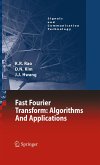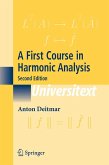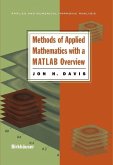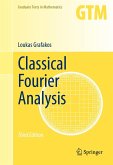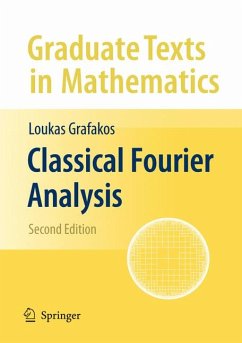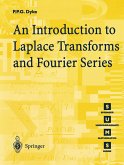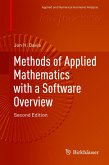Many of the chapters end with a summary of their contents, as well as a short historical note. The text contains a great number of examples, as well as more than 350 exercises. In addition, one of the appendices is a collection of the formulas needed to solve problems in the field.
Anders Vretblad is Senior Lecturer of Mathematics at Uppsala University, Sweden.
Dieser Download kann aus rechtlichen Gründen nur mit Rechnungsadresse in A, B, BG, CY, CZ, D, DK, EW, E, FIN, F, GR, HR, H, IRL, I, LT, L, LR, M, NL, PL, P, R, S, SLO, SK ausgeliefert werden.
"This book is one in the Graduate Texts in Mathematics series published by Springer. ... There is a variety of worked examples as well as 350-plus exercises ... . The book is a valuable addition to the literature on Fourier analysis. It is written with more mathematical rigour than many texts ... without being totally opaque to the non-specialist. ... The examples at the end of each chapter are well structured and a reader working through most of them will achieve a good understanding of the topics." (Graham Brindley, The Mathematical Gazette, Vol. 90 (517), 2006)
"The author ... presents the results of his experiences and choices for decades of teaching courses. ... The tables and formulas collected ... are of great service. At the end of each chapter there is a summary section that discusses the results, gives some history, and suggests instructive exercises. We thus have a solid course on Fourier analysis and its applications interesting for students and specialists in engineering as well as for mathematicians. ... I believe that the book will find numerous interested readers." (Elijah Liflyand, Zentralblatt MATH, Vol. 1032 (7), 2004)
"This book is an interesting mixture of a traditional approach ... and a more modern one, emphasizing the role of (tempered) distributions and the application aspects of Fourier analysis. ... The book is certainly highly recommendable for those who want to learn the essence of Fourier analysis in a mathematically correct way without having to go through too much technical details." (H.G. Feichtinger, Monatshefte für Mathematik, Vol. 143 (2), 2004)
"The book is appropriate for an advanced undergraduate or a master's level one-term introductory course on Fourier series with applications to boundary value problems. ... a deep idea is presented in a non-rigorous way both to show the usefulness of the idea and to stimulate interest in further study. ... The book has a goodcollection of exercises ... . Each chapter ends with both a summary of its main results and methods and historical notes." (Colin C. Graham, Mathematical Reviews, Issue 2004 e)



